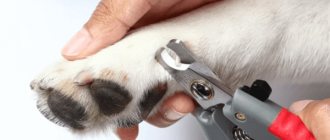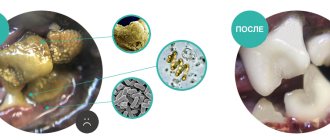Unfortunately, often painlessly putting a dog to sleep with an injection is the only way to save your four-legged friend from suffering. This is not an easy decision. However, accepting it is much easier than watching your pet suffer. Everything ends someday. The time allotted to you and your faithful friend has expired. Let him go.
Euthanasia of dogs is carried out in several cases. As sad as it may be, euthanasia is the only option if the pet:
- lost functionality due to old age;
- terminally ill and in constant pain;
- received injuries incompatible with life;
- shows aggression;
- attacked a person for no reason.
It always seems that there is still time and you can wait. It is forbidden. Any of the above circumstances clearly indicates that it is better, and in most cases simply necessary, to euthanize the dog immediately. There is no need to equate making such a decision with cruelty. This is precisely mercy - to relieve suffering and sacrifice one’s interests for the sake of a close friend. Putting a dog to sleep under anesthesia is a completely justified decision.
Euthanasia - what is it?
Euthanasia is a painless medical way to end a life and alleviate end-of-life suffering. So far this term is legal only for people. In medicine, euthanasia can only be performed with the personal consent of the patient. But in Russia this procedure is prohibited in relation to people.
When it comes to animals, things are a little more complicated. Legally, today an animal for its owner is property that he disposes of at his own will. This means that only the owner should make the decision to end the life of his pet.
This issue is discussed more deeply in the draft of the not yet in force animal protection law.
Veterinarians also use the term “euthanasia” for this procedure and adhere to the same principle of painless care. Any other action towards an animal that causes pain or results in its death already falls under the definition of “cruelty”.
Attention! In veterinary medicine, the term “euthanasia” is equivalent in lexical meaning to the term “euthanasia”.
In what cases is euthanasia necessary?
Sometimes euthanasia becomes the only option for the owner and dog, but in some cases its use is unlawful.
There are two types of reasons for euthanasia:
- According to veterinary indications.
- For social and domestic needs.
The first type includes various types of body damage:
- Numerous injuries incompatible with life, for example after an accident.
- Incurable diseases - malignant neoplasms (cancer with metastases of various locations), inoperable formations of various etiologies (cysts, polyps that cannot be removed or treated conservatively, i.e. with negative dynamics), massive internal bleeding that cannot be stopped, systemic non-contagious diseases, untreatable and with a poor prognosis.
- Congenital pathologies that exclude the normal functioning of the body.
- Intoxication with poisons that have no antidote.
- Infections with highly contagious infections dangerous to humans (zooanthroponoses), for example, carnivore rabies virus.
But it is strictly forbidden to euthanize:
- An animal that has a disability, but is in consistently good health.
- An animal that has a malignant tumor, but with a high probability of a favorable outcome.
- An animal with an infectious disease and a favorable prognosis for it, unless the infection is dangerous to humans.
- An animal with any disease that has a favorable prognosis.
When the question of euthanasia for veterinary reasons arises, the owner needs to fully examine the dog, consult with a veterinarian and find out the further prognosis of the outcome of the disease.
If there is a really high probability of death, the veterinarian will confirm the presence of indications for euthanasia.
The second type of reasons for euthanizing dogs includes:
- The extreme old age of the dog and the associated need for specific care. Sometimes a dog has a lot of chronic diseases associated with age-related changes. They may not cause true suffering to the animal, but require large financial costs or the constant presence of the owner. Few average owners can afford this kind of care for an old dog. When this is not possible, people decide on euthanasia.
- Excessive aggression, uncontrollability, mental disorders, dangerous to humans. If a dog constantly shows pronounced active aggression towards people or other animals, and cannot be trained or corrected in behavior, this is an indication for euthanasia.
But often owners demand that a healthy animal be euthanized simply to please their desires. This is unacceptable and prohibited by law. No veterinary clinic will provide such a service.
Natural sedatives
Sometimes dog breeders note that their pet’s own reactions prevent them from falling asleep: anxiety, fear, aggression, depression. In this situation, natural sedatives will be sufficient to eliminate stress.
The safest are herbal drops, decoctions, and infusions. According to the degree of strength of the effect, they are distinguished: valerian, motherwort, passionflower, Baikal skullcap.
Among pharmaceutical products with natural ingredients, it is worth mentioning the following: “Cat-Bayun”; "Fitex"; "Dbd Relax Plus"; Hormone Balancer Flower Essence. They provide the body with useful substances and have general strengthening properties.
How to euthanize a dog at home yourself
Unfortunately, for most owners the answer will be disappointing: “It is extremely difficult to painlessly end a dog’s life at home.”
The exception will be those people who have free access to potent substances from the pharmaceutical list A (they are stored in safes under lock and key, are subject to strict accounting and are not sold simply upon request) and who have a proven skill in intramuscular and intravenous injections. This is all necessary to complete the euthanasia procedure.
The most that can be done for an exhausted dying dog at home is to invite a veterinarian to perform euthanasia at home. Many clinics provide this service.
Features of the euthanasia procedure
Euthanasia is carried out only after being completely convinced that this is the only way to save the animal from physical suffering.
The procedure itself is performed in two stages:
- The dog is placed under deep anesthesia.
- The heart and/or breathing are stopped by medication.
If these actions are not carried out in full, then this is no longer euthanasia, but inhumane killing, in which the animal experiences significant physical suffering.
Organizational aspects
Any drugs that can cause respiratory or cardiac arrest will cause severe pain when administered. Therefore, the animals are first given general anesthesia (anesthesia).
After the animal is immersed in deep anesthesia, its reaction to external stimuli disappears, the muscles relax, breathing becomes deep and unnoticeable. In such an unconscious state, the administration of drugs becomes painless.
Sometimes premedication or sedation is required before anesthesia - if the dog is very anxious or aggressive. The presence of the owner is very necessary for the dog while it is conscious. This will allow her to be calmer and not panic.
Important! It happens that a veterinarian refuses to allow the owner to be present during the euthanasia of his dog. If this is connected with the owner’s deep emotional experiences (when it is difficult for a person to control himself from the experience), then this is a normal practice.
But if the owner is denied the presence of his pet at the euthanasia for some other reason, then this is a reason to suspect that instead of euthanasia, they intend to inhumanely kill the animal.
Possible side effects
From the central nervous system, low blood pressure, weakness, drowsiness, fatigue, depression are possible (especially in elderly or weakened patients).
In some cases, nausea, vomiting, diarrhea, dizziness, changes in breathing or allergic reactions occur. To avoid side effects, a preliminary examination, consultation with a doctor and observation of the animal will be required.
Hypnotic drugs for temporary euthanasia of animals
Temporary euthanasia is not quite the correct formulation. It is more correct to call this manipulation general anesthesia or general anesthesia. Moreover, this should not be confused with sedation:
- with general anesthesia, the animal is medicated into a state intermediate between sleep and unconsciousness, retaining only unconditioned reflexes;
- During sedation, the animal is in a depressed state of consciousness.
In general, sedation has an analgesic effect and is similar to mild general anesthesia.
Temporary euthanization of the animal is required to carry out any manipulations with it, for example, during labor-intensive surgical interventions. Sedation is carried out for simple manipulations that require a calm and relaxed state of the patient.
These types of “euthanization” are not directly related to euthanasia because do not interrupt the life of the animal, but are used for its treatment. But there is still something in common between them - these are the drugs used.
Injections
For temporary euthanasia and euthanasia, the same drugs are used, but in different dosages. The method of administration is also the same, in accordance with the instructions for use.
The most common among them is Propofol and its veterinary analogues: Anestofol, Propovan, Vetfol.
- This non-inhalation anesthetic agent is used for euthanasia of dogs at a dose of 10-20 mg per 1 kg of live weight. Since different manufacturers have different concentrations of the finished solution, the dosage in ml/1 kg of live weight will differ. The introduction is slow, intravenous (at least 30-60 seconds depending on the volume).
- For temporary euthanasia, Propofol is used in dogs at a dose of 6.6 mg/kg live weight. It is also administered intravenously, slowly over 30-60 seconds.
This is basic application information, but when actually using this product, you need to take into account more detailed information about it, because... There are a lot of subtle pharmacological nuances.
In addition to Propofol, barbiturates can be used for euthanasia: Sodium thiopental, Hexenal pentobarbital, Phenobarbital, Zoletil, etc.
For temporary euthanasia, use 1% Anestofol, Domitor, Dorben, Zoletil, Xila, Xilavet, Xylanit, Meditin, etc.
When euthanizing, after putting the dog under deep anesthesia (stages 4-5), the doctor administers an intravenous injection to stop breathing and/or the heart.
Most often, 25% magnesium sulfate (magnesium) is used for this purpose in particularly large doses (2-3 times higher than the maximum allowed according to the instructions). This remedy has a pronounced relaxing effect on the muscles, lowers blood pressure and inhibits respiratory function.
Attention! Using this drug without first inducing anesthesia causes extremely severe physical suffering. In addition, if this drug gets past the vein, under the skin, it causes a severe chemical burn (like calcium chloride).
In addition to magnesia, you can use lidocaine or muscle relaxants (Ditilin, Lystenon, Adilin) in extremely high doses, but for painless euthanasia, general deep anesthesia is also necessary before their administration.
Pills
Tablet forms of drugs are not used in veterinary medicine for euthanasia. This is due to the fact that this method of administering the drug does not ensure rapid absorption into the blood and distribution throughout the nervous system.
Tablets can only put the dog into deep sleep and harm the nervous system against the backdrop of powerful intoxication. It cannot lead to a quick and painless death.
Price for euthanasia of dogs and cats at home
Below is the approximate cost of euthanizing a dog or cat at home, depending on the size of the pet. Prices are relevant for large cities (Moscow, St. Petersburg, etc.). The quotes indicate the price of animal euthanasia for residents of Ukraine. The cost of euthanizing a dog will be 20-30% less if you live in a small city.
Without a veterinarian visiting your home, the cost of euthanasia will be less. The visit of a veterinarian itself costs about 1000-1500 rubles. In addition, you will be offered additional services, such as removal of the animal's body for subsequent cremation. They can even return the ashes in a special vessel, but such a service will be much more expensive than general cremation.
- Cat meowing
- Alexandrian parrot
- Why does a cat need a mustache?
- Rescue dogs
- Hypoallergenic cats
- Why does a cat need a tail?
By the way, many veterinary clinics include in the cost of their services the removal of the body to the crematorium and cremation of animals (of course, if the customer agrees). The price is lower because if you order cremation separately, it will be more expensive, since you will need to come for the body and take it away. After euthanasia, the body is taken away, when they go back and are taken to the crematorium for cremation. However, some veterinary hospitals may require additional fees for any other services other than euthanasia, so it is better to find out about everything in advance.
| Dog weight: | Euthanasia price: |
| Up to 10 kg | 1000-2000 rub. (200-300 UAH) |
| From 10 to 20 kg | 2000-3000 rub. (up to 300-350 UAH) |
| From 20 to 30 kg | 3000-4000 rub. (up to 350 UAH) |
| From 30 to 50 kg | 4000-5000 rub. (about 350-400 UAH) |
| From 50 to 70 kg | 5000-7000 rub. (up to 400-500 UAH) |
| Euthanasia of a cat: | 1000-2000 rub. (100-250 UAH) |
Note. Prices for euthanasia of dogs and cats in rubles are very approximate and are more relevant for large cities in Russia. However, even in St. Petersburg, there are offers from veterinarians for euthanasia with a home visit costing 1,300 and up to 3,000 rubles maximum. Sometimes all services (visit of a doctor, anesthesia, euthanasia, removal of the body and cremation), even for euthanasia of a dog weighing 60-70 kg, will cost 5000-7000 rubles. The main thing is not to chase the price, but the professionalism of the doctors. Talk to your friends about choosing a good veterinarian in your city.
Pros and cons of euthanasia
All the advantages and disadvantages of euthanasia can be reflected in the table:
| Advantages | Flaws |
| Relieving your pet of excruciating physical suffering | Price |
| Fast and painless care | Having to make a tough decision |
| The possibility of the owner being present during the procedure, the opportunity to say goodbye | |
| Possibility to carry out euthanasia at home by inviting a veterinarian |
Recommendations from veterinarians and breeders
The vast majority of people who have a relationship with dogs, who love them as members of their family, agree that you should not make your pets suffer.
If such a disaster occurs, then it is wiser to decide on humane euthanasia than to allow yourself to selfishly torture a dog that gave you love and devotion.
But with all this, none of these people would recommend euthanasia on their own, at home. This is due to the impossibility of freely purchasing the necessary medications and/or veterinary drugs and the lack of skill in intravenous injections among most people.
If these requirements are not met, euthanasia essentially ceases to be euthanasia and becomes cruelty to the animal.











